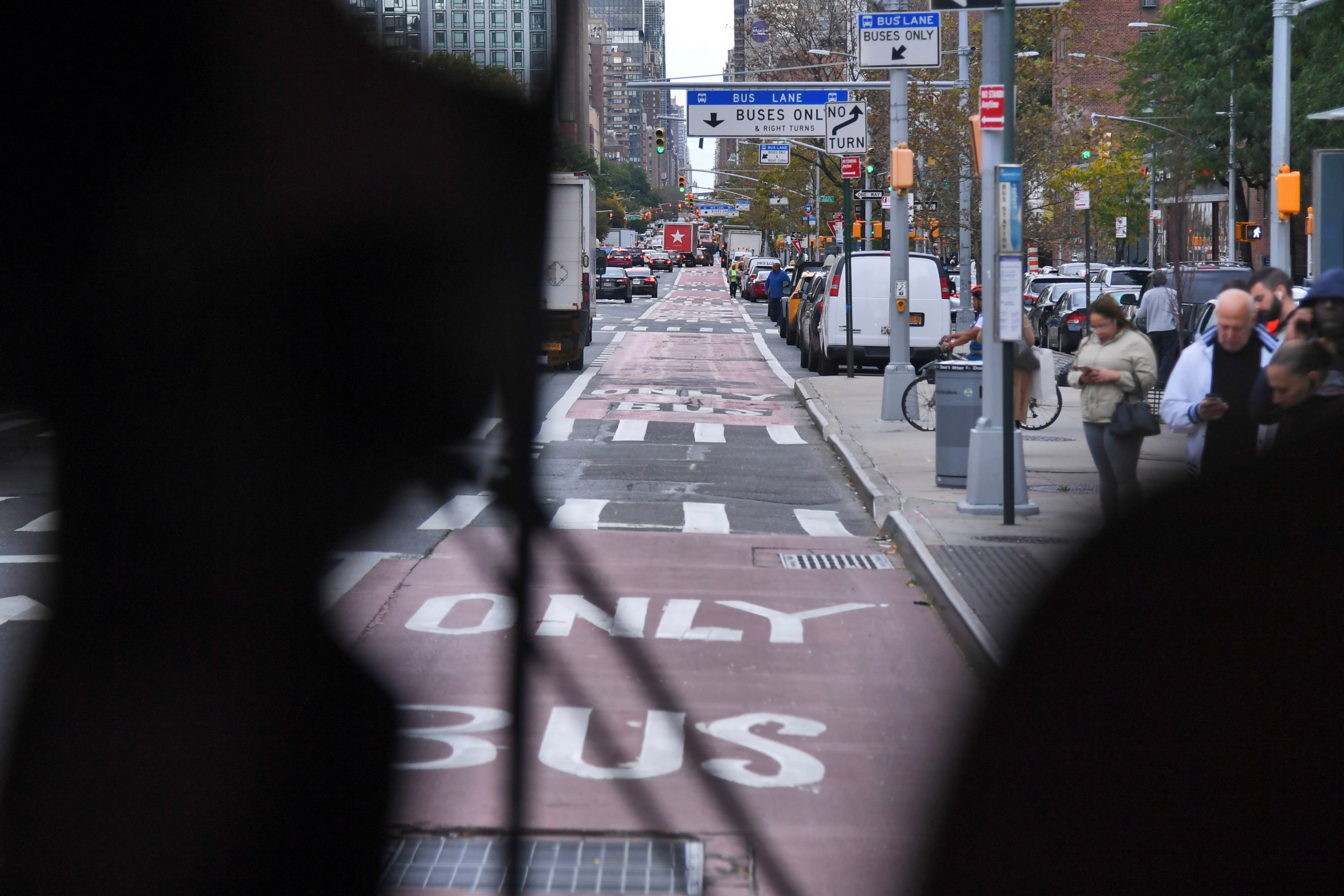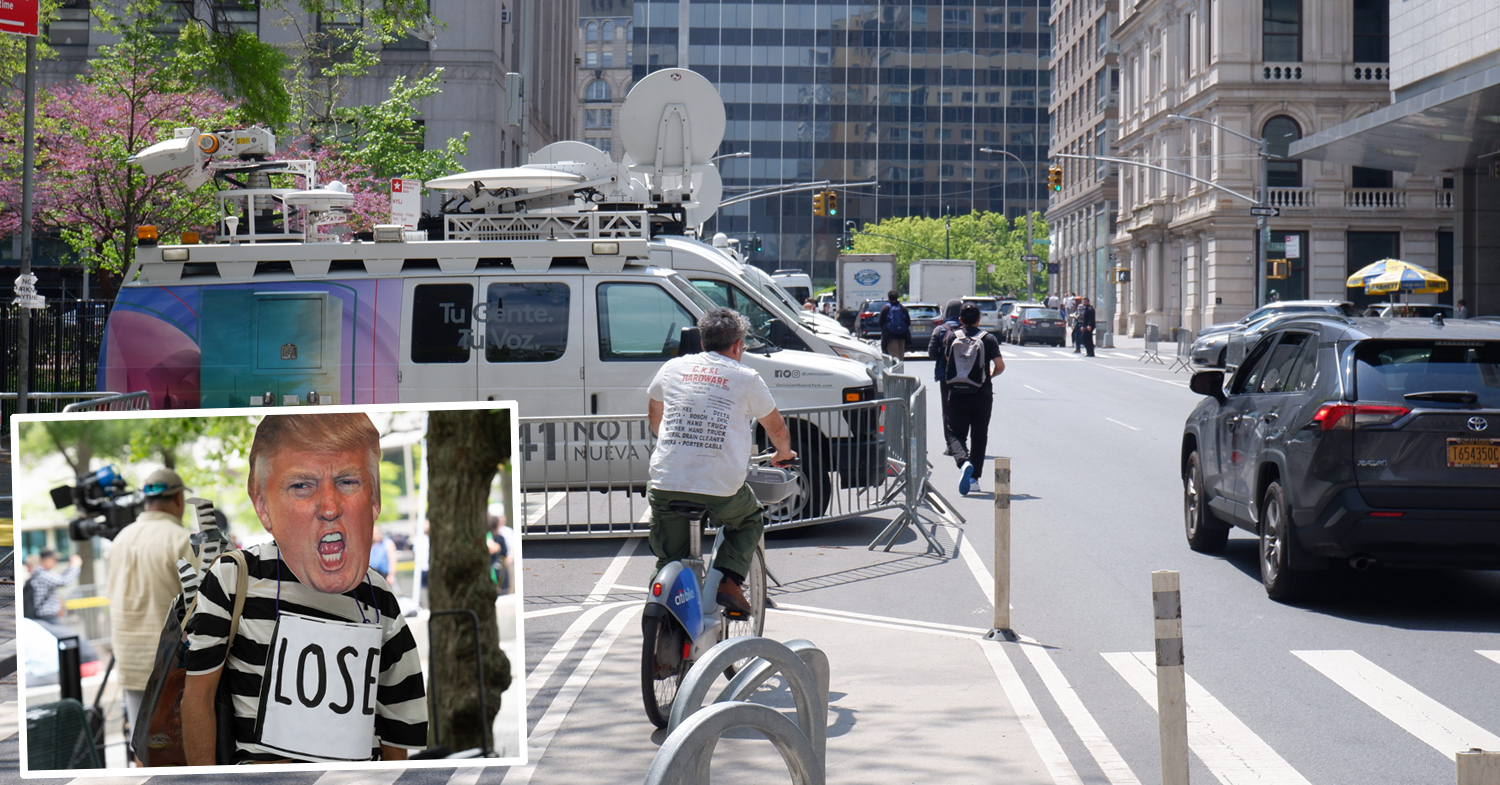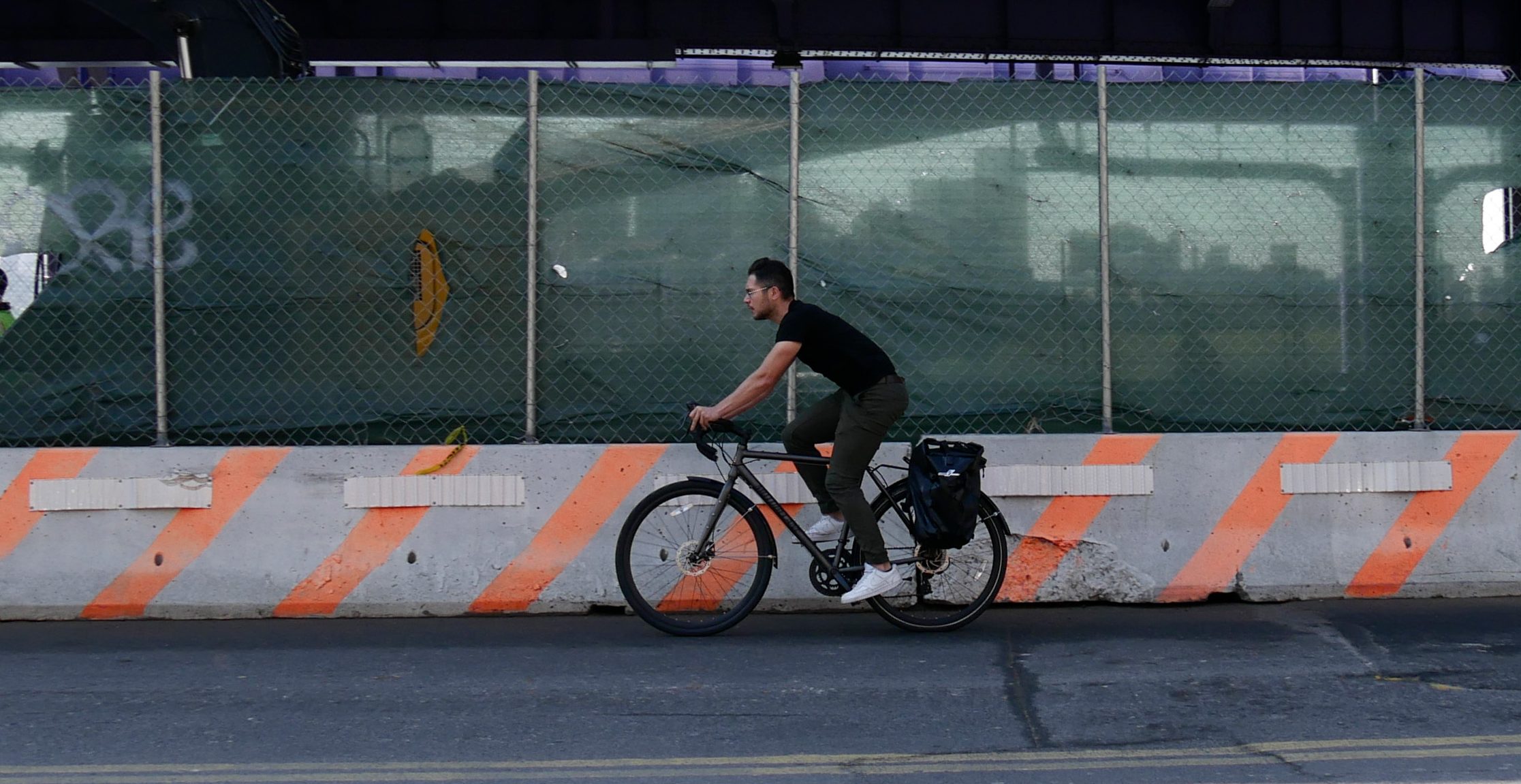RPA Refutes Anti-Pricing “Alternatives” Study
10:54 AM EDT on October 19, 2007
On Wednesday, Jeffrey Zupan, Regional Plan Association's transportation analyst, issued a comprehensive
rebuttal of the main traffic reducing measures proposed in Keep NYC Congestion Tax Free's anti-congestion pricing report, “Alternative Approaches to Traffic
Congestion Mitigation in the Manhattan Central Business District."
Thanks to Zupan, Transportation Alternatives and other critics, four fundamental problems with the Keep NYC Congestion Tax Free plan have emerged:
1. Any alternative
plan which does not include some form of congestion pricing will forfeit $354.5
million in federal transportation aid -- much of which is dedicated to bus
improvements in Brooklyn and Queens.
2. The plan does
not address through traffic, which accounts for 39%
of driving in the Manhattan CBD. Congestion
pricing does.
3. The plan does not
address -- and may worsen -- traffic diversions from paid river crossings to free
East River and Harlem River bridges, which hurt neighborhoods including Downtown Brooklyn, LIC/Woodside, Harlem and the South Bronx. Congestion pricing directly addresses these traffic diversions.
4. Some of the traffic reducing measures in the plan -- value parking pricing, variable tolls and BRT,
for example -- would be far more
effective if used with congestion pricing, instead of as a substitute for it. Many of the measures are not "alternatives" to congestion pricing but complements.
Among other problems with the report, the Keep NYC Congestion Tax Free plan applies an "equity double standard": It harshly criticizes congestion pricing for its pocketbook impact on middle class motorists while ignoring the impacts of value parking, variable tolling and $200 double parking tickets that the plan would impose on these same motorists.
Zupan sums up the "Alternatives" report:
While many of these measures areworthwhile, the report overstates both their traffic reduction impact and theirrevenue potential. Many of theseestimates are speculative, and the costs and difficulties of implementation arelargely unaddressed. More importantly,nearly all of these would be far more effective if implemented in combinationwith congestion pricing.
The full text of Zupan's comments appears after the jump.
Comments by Jeffrey M. Zupan, Senior Fellow for Transportation
October 15, 2007
on “Alternative Approaches to Traffic Congestion Mitigation in the Manhattan Central Business District (October 2007)”
by Keep New York Congestion Tax Free
This report argues for a set of 13 proposals that could
reduce vehicles miles traveled and congestion by as much or more than PlaNYC’s
proposed congestion pricing pilot program. While many of these measures are worthwhile, the report overstates both
their traffic reduction impact and their revenue potential. Many of these estimates are speculative, and
the costs and difficulties of implementation are largely unaddressed. More importantly, nearly all of these would
be far more effective if implemented in combination with congestion
pricing. The following comments address
the specific proposals in the report.
Meter 10,000 now free
on-street spaces and charge double the current rate: The report estimates that this action would
reduce vehicle miles traveled (VMT) by 1.8 to 2.4 percent and increase revenues
by $80 to $100 million per year. The report indicates that a 1995 study found
that cruising for on-street parking accounts for 15 percent of VMT in west
midtown during midday, and they extrapolate this to all day for all of the
charging zone, an unsupported assumption. The revenue assumptions are equivalent to each parking space being used
fully for 13 hours each weekday, which may be overly optimistic. They do not account for the added cost of
meter installation, enforcement, and administration. Conclusion: Traffic impacts are conjectural
and net revenue gains are likely to be too high.
Reforming placard
use: The report indicates such
reform could lead to reductions of “perhaps 2 to 3 percent” and add $50 to $60
million in revenues. They cite Bruce Schaller’s reports on the subject. There
are three problems with their analysis. First, they rely on a hypothetical example by Schaller of a 14,000
reduction in cars driven by government employees, i.e. a “what if” not an
estimate. But they also say that a
review to identify which workers should receive (or keep) placards must be
done. There is no certainty that the resulting review would eliminate 14,000
workers from the placard pool. Second,
they assume that each worker travels 4 to 5 miles per day within the zone,
which is much too high since most of the workers are destined for Lower
Manhattan and the vast majority are likely to cross into the zone across the
nearby East River, and if they do come from the north use the FDR Drive or West
Street. Third, the report takes credit
for added revenue as former placard users switch to on-street meters. This assumption is flawed in two respects: a)
it cannot assume that these workers would continue to drive and switch to
on-street meters, as many may switch to public transit or off-street parking,
and b) the added revenue has already been counted in the on-street meter
proposal discussed above. Conclusion:
Both the VMT reductions and revenue potential are likely to be much lower than
estimated in the report and implementation will be difficult.
Reduction in taxi
cruising: This action is estimated to reduce VMT by “perhaps 2 to 3
percent.” No revenue potential is
assumed. They target a goal of 50
additional cab stands to accomplish this, but do not discuss locations or the
difficulty in finding locations where it can make sense from a traffic impact
perspective. The report states that
cruising accounts for 13 percent of VMT and takes credit for reductions in
cruising by 10 to 20 percent, not out of line IF you could install 50 cab
stands. Conclusion: Ability to implement is unproven.
Higher taxi fares:
A $3 surcharge for trips starting or ending in the zone is suggested, which is
estimated to reduce VMT by 1.5 percent. The report points out that taxis are excluded from the current
congestion pricing (CP) plan. No revenue gain is assumed for the City. In effect, this is a policy that could also
be effectuated through congestion pricing by eliminating or reducing the taxi
exemption. There is no discussion of the
City’s argument that this could have negative economic impacts, or the
political difficulty of getting it enacted. Conclusion: This measure, if included as part of the City’s congestion
pricing plan, would increase the revenue potential to be directed toward public
transit.
Higher and variable
tolls on existing tolls facilities: The report’s proposal is estimated to
reduce VMTs by 1.5 percent and bring in $195 million per year. The assumption about these tolls increase is
that the added revenue is a substitute for the revenue achieved by the
congestion pricing proposal. However, it tries to take credit for expected
increases in PA and MTA tolls that have to
be made in any case to cover rising operating, maintenance and debt service
costs rather than the new money for state of good repair and system expansion
that CP would generate. So the revenue cannot be counted as a replacement for
congestion pricing revenue. It does
raise the unanswered question of whether the CP charge will increase along with
tolls.
This proposal also highlights the inequities and
inefficiencies of the current system, flaws that congestion pricing would
correct. The increase of tolls on
current facilities while leaving other entry points free places the entire
financial burden on only a portion of drivers entering the CBD. It will also exacerbate congestion in
neighborhoods leading to the free crossings as drivers seek to avoid higher
tolls. Variable tolls would also be far
more effective when combined with congestion pricing. In fact, a study
commissioned by the Tri-State Transportation Campaign in August found the
largest time saving benefits would be realized if MTA
instituted a value pricing program consistent with PlaNYC’s proposed congestion
pricing plan. Conclusion: Periodic toll increases cannot be seen as a
substitute for congestion pricing, and in the absence of it would be inequitable
and lead to more traffic problems, especially in Brooklyn
and Queens, not less. Variable pricing is an effective
tool that should be implemented along with congestion pricing.
Two-way truck tolls
on the VN Bridge are estimated to reduce VMT by 0.1 to 0.2 percent and add
$10 million in revenue. These estimates are small and conjectural and the
proposal, no matter how sound, will and has received tremendous resistance from
Staten Island. Conclusion: This proposal, although a
sound one is largely irrelevant as part of a substitute for the City’s Plan.
Increased fines from
traffic enforcement are estimated to gain from $75 million to $150 million
in revenue annually. At the proposed fine levels, this would require an average
of 6,000 summonses a day. It would be useful to know how much of an increase in
summonses that represents. The estimates are conjectural and the cost of issuing
these summonses is not accounted for. If
successful in reducing violations, which is not ensured, the revenues would
diminish over time. One cannot take
credit for both traffic gains and sustained revenue gains from enforcement
measures. Conclusion: In the absence of
more analysis, it appears that the revenue estimates are overstated and the
enforcement costs understated.
Block the box
ticketing is proposed and estimated to gain $15 or to $25 million in revenue
based on 300 to 500 additional summonses daily. This is highly conjectural, but
like other traffic enforcement measures that issue summonses, even should the
program be successful in reducing block the box violations, the revenue gains
would diminish over time. Conclusion:
The revenue gains are likely to be overstated.
Black car enforcement
measures, construction project regulations, traffic signal upgrades, and
implementing 511 are proposed but all traffic gains are conjectural and
revenue gains, if any, are modest. Conclusion: These measures are useful
complements to the City’s CP plan, but traffic and revenue benefits are
conjectural and modest.
Added bus and ferry
services are assumed to attract 5,000 auto commuters, but this estimated is
highly conjectural and unlikely; there will be no financial incentive for
drivers to shift, as there is with the congestion pricing plan. The shift is presented as hypothetical and
none of the net added costs associated with these new services are accounted
for. Conclusion: The traffic benefits are
conjectural and the net revenues are likely to be exceeded by the costs to
implement.
Stay in touch
Sign up for our free newsletter
More from Streetsblog New York City
EXCLUSIVE: OMNY Debuts on Fair Fares After Delays
The long-awaited Fair Fares expansion will launch as a three-month pilot for a few dozen riders.
Good Luck Docking Your Citi Bike In Lower Manhattan
Many frustrated commuters to Lower Manhattan opted to simply abandon their Citi Bikes undocked due to the lack of open spots in the area.
Wednesday’s Headlines: ‘ACE’ in the Hole Edition
The MTA approved a $141-million contract to put hundreds of new automated traffic enforcement cameras on buses. Plus more news.
Trump Trial Street Closures Push Pedestrians, Cyclists into Busy Traffic
News vans have dangerously blocked the sidewalk and bike lane on Lafayette Street daily since Donald Trump's trial began nearby two weeks ago.
Eyes On The Street: Coastal Resiliency Causes Mess For Pedestrians and Cyclists
Unfortunately for cyclists and pedestrians, this situation won't be fixed until "at least 2026.”




